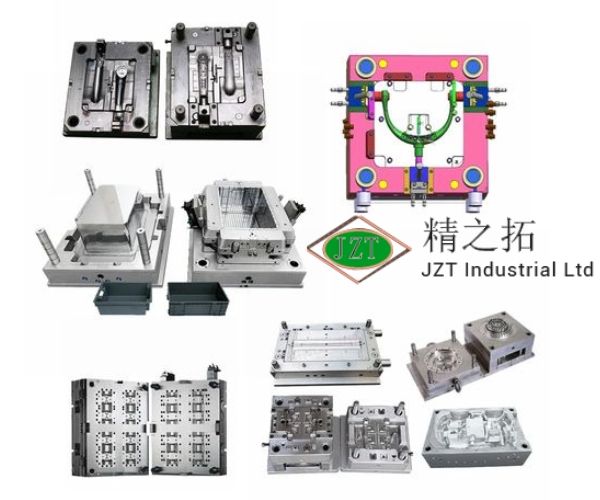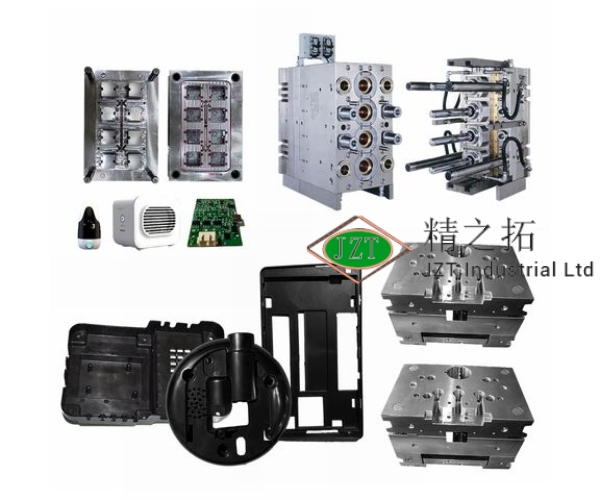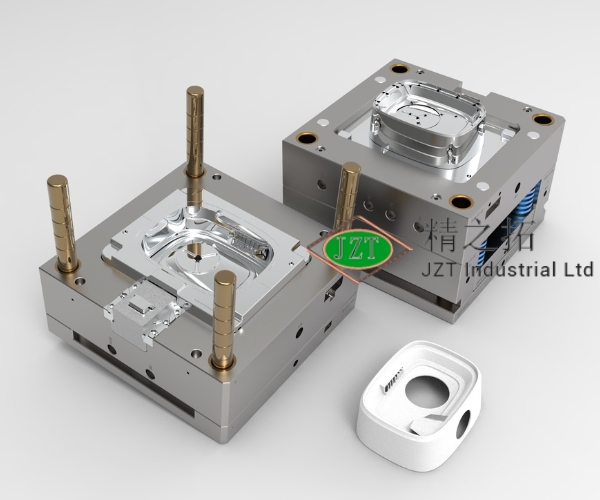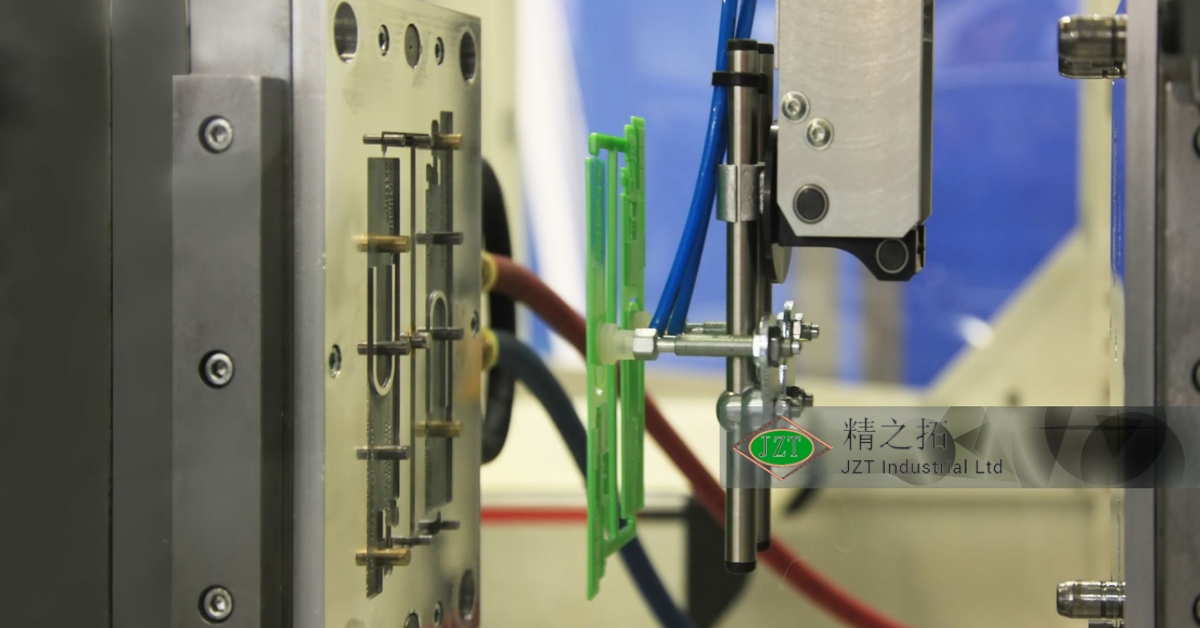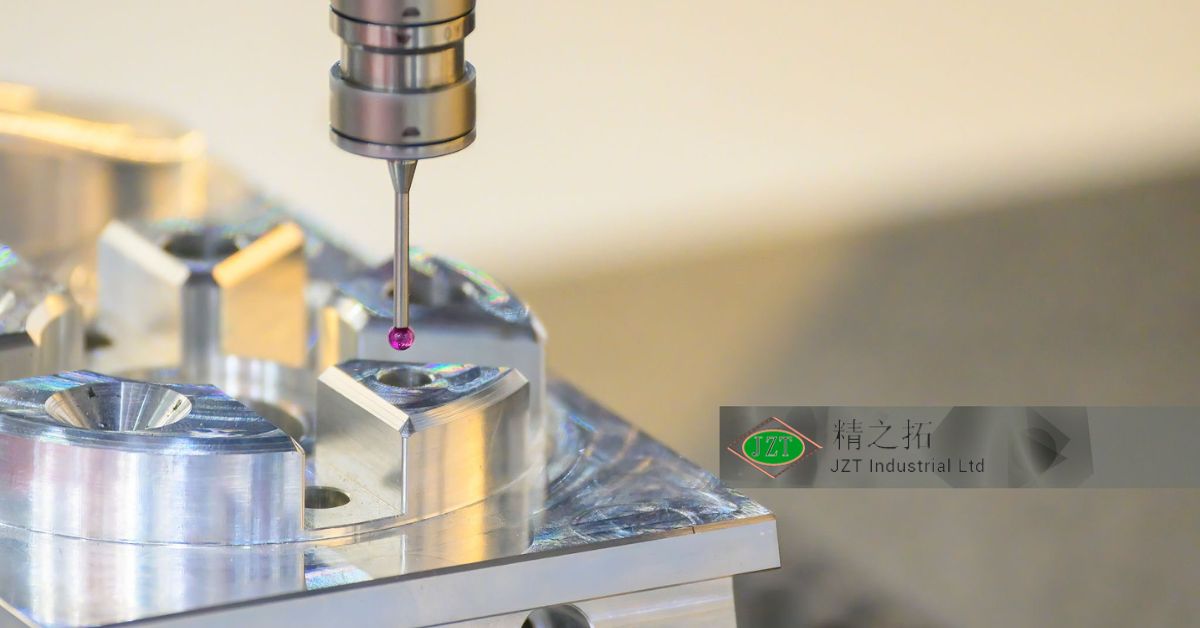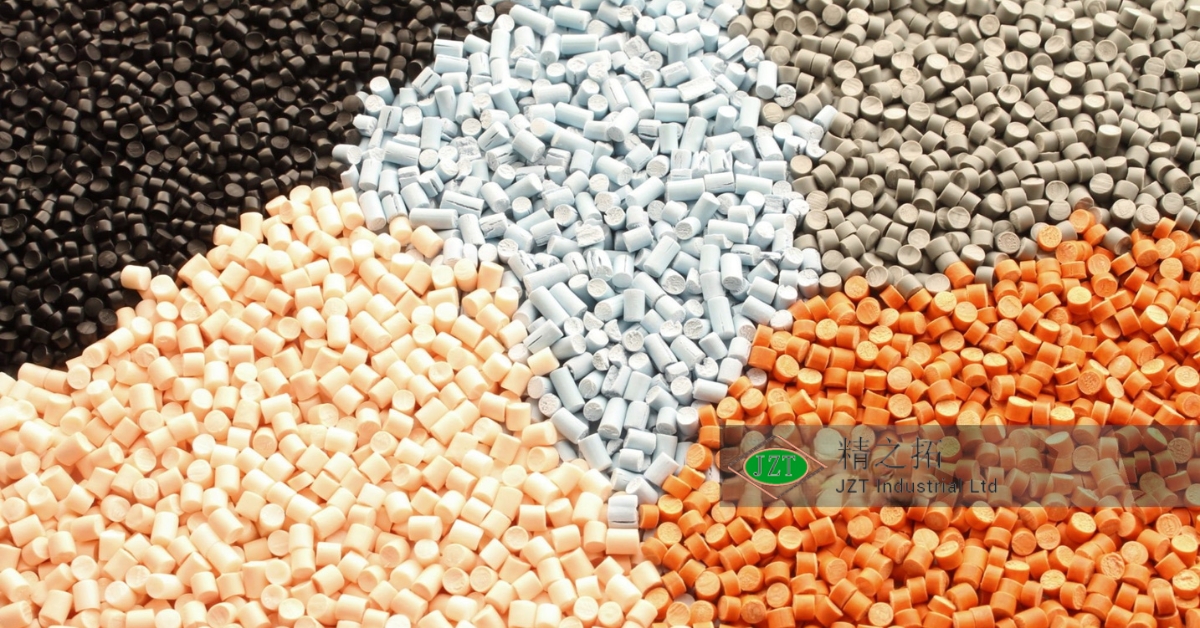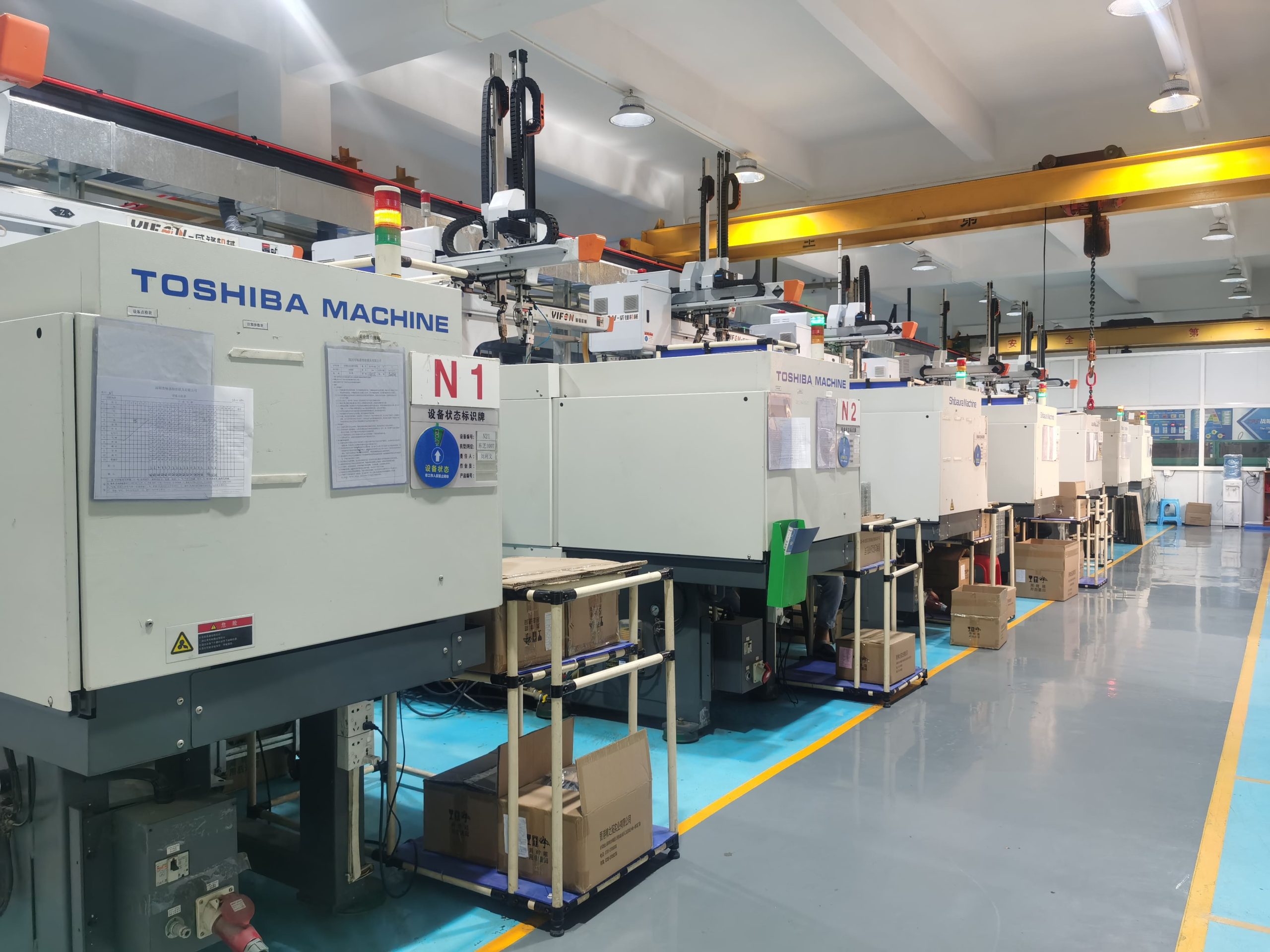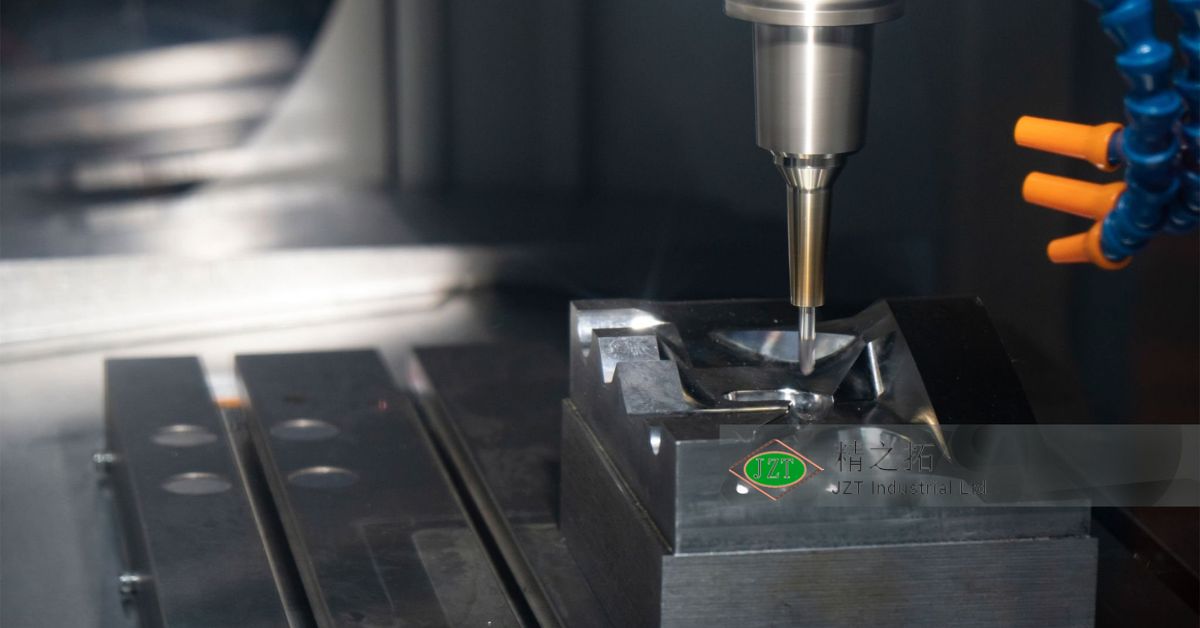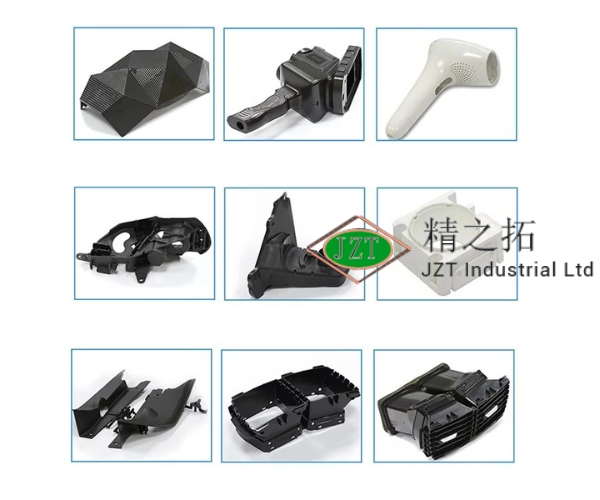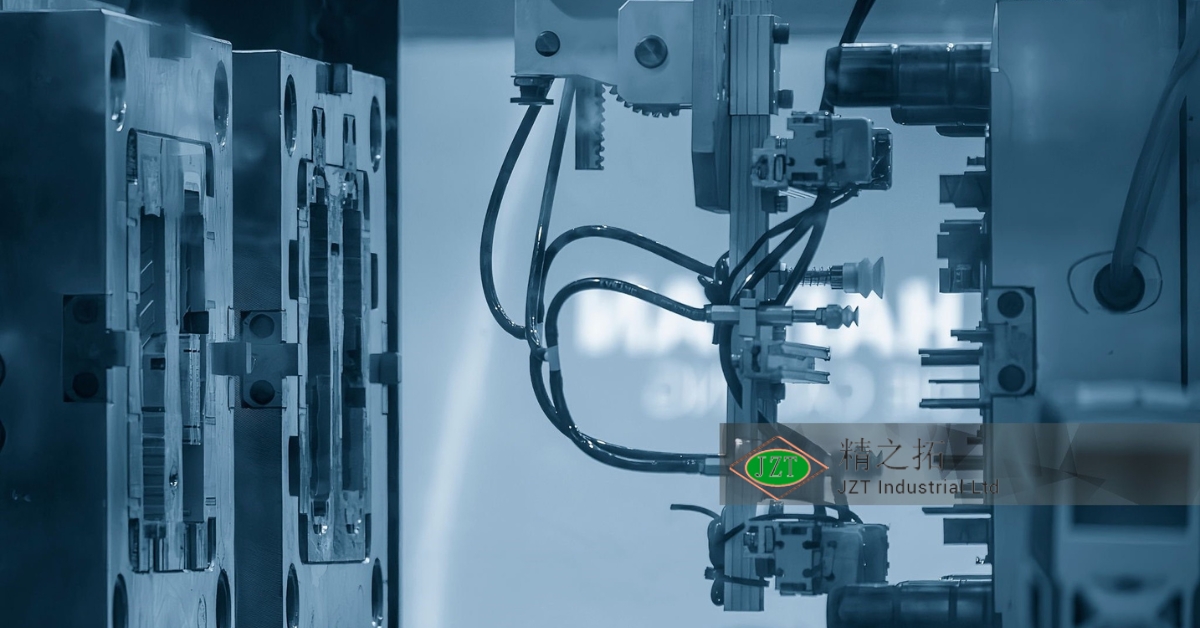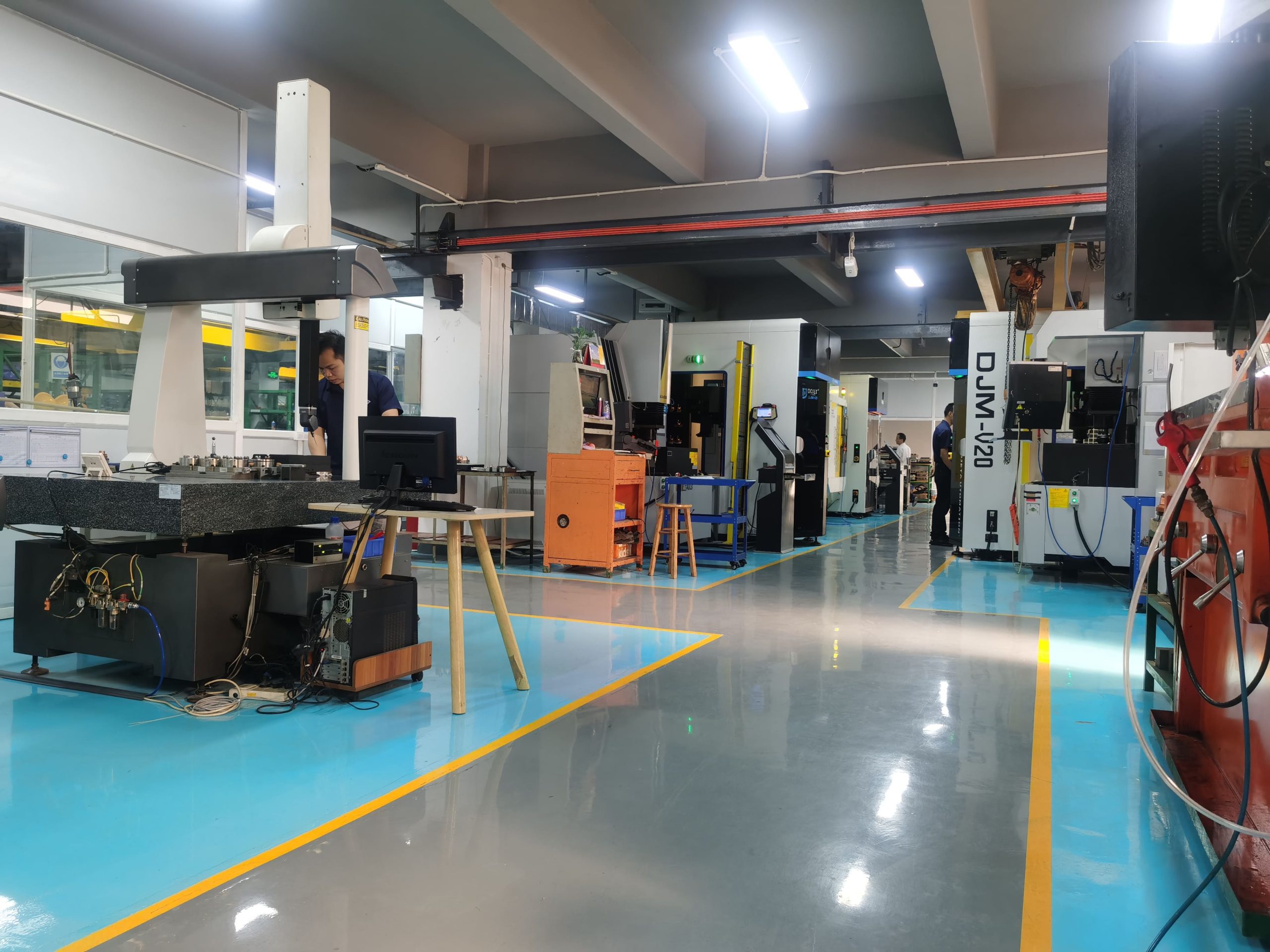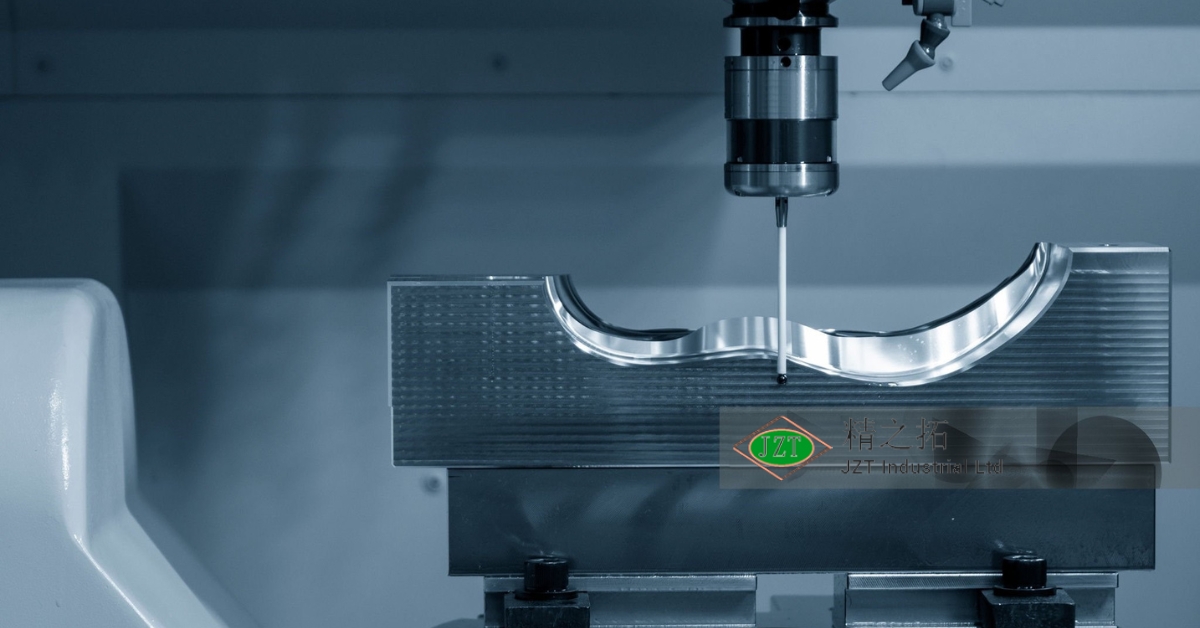소개
Maintaining high-quality standards in 플라스틱 사출 금형 is essential for ensuring the consistent production of reliable parts, particularly in industries such as automotive, medical devices, electronics, and consumer goods. Quality in injection molding refers to achieving precise dimensions, excellent surface finishes, and mechanical strength that meet or exceed the specifications of the product’s end-use application. However, achieving these results can be challenging due to the complexities inherent in the injection molding process.
From warping and surface defects to dimensional inconsistencies, several issues can arise during production that can impact part quality. These challenges often result in increased costs due to wasted materials, rejected parts, and additional labor required for rework or adjustments. For manufacturers, finding reliable ways to improve injection molding part quality is not only a matter of reducing costs but also a way to enhance overall productivity, minimize waste, and satisfy customer expectations.
In this article, we will explore five proven ways to improve the quality of injection molded parts, focusing on optimizing mold design, material selection, process parameters, maintenance routines, and quality control. By applying these strategies, manufacturers can ensure that each production run meets the highest standards for part quality and reliability.
Understanding Quality Standards in Plastic Injection Molding
Achieving high-quality standards in 플라스틱 사출 성형 is essential for producing parts that are both functional and durable. Quality standards are determined by several factors, including dimensional accuracy, surface finish, mechanical strength, and overall durability. Manufacturers across industries, from automotive to medical devices, rely on consistent part quality to meet customer demands and regulatory requirements. To meet these expectations, it’s crucial to define and adhere to quality benchmarks that ensure each part meets precise specifications.
What Defines “High-Quality” in Injection Molded Parts?
Quality in injection molded parts is defined by a set of criteria that measure the part’s functionality, appearance, and durability. These criteria often include:
- Dimensional Accuracy: Each part must match its design dimensions precisely to ensure it fits with other components in an assembly.
- Surface Finish: Smooth, defect-free surfaces are essential for parts that are visible or handled by consumers, especially in consumer electronics and automotive interiors.
- Mechanical Properties: Depending on the application, parts must exhibit strength, flexibility, or resistance to heat and chemicals.
- 일관성: High-quality production requires that each part in a batch is identical, with no variation from the specified parameters.
Achieving these qualities can be challenging due to the numerous variables that influence the injection molding process, such as mold design, materials, and processing conditions. Understanding these factors is the first step to improving part quality and ensuring that each product meets defined quality standards.
Common Defects in Injection Molded Parts
Defects in injection molded parts are common but can be minimized through careful control over design, materials, and processes. Some typical issues include:
- 싱크 마크: Often caused by uneven wall thickness or insufficient cooling, sink marks appear as depressions on the part’s surface.
- 워핑: Warping occurs when a part cools unevenly, causing it to deform. It is typically a result of uneven cooling or improper material flow.
- 플래시: Excess material that seeps out of the mold cavity edges, resulting in thin protrusions along the part’s seam.
- 짧은 샷: This defect occurs when the material does not fully fill the mold cavity, leading to incomplete parts.
- 흐름선: Visible patterns on the part’s surface caused by variations in material flow or cooling.
These defects not only compromise the appearance of the part but can also affect its functionality and durability, leading to increased costs due to rework or scrapping of parts.
Importance of Quality in End-Use Applications
High-quality injection molded parts are essential for ensuring the safety, performance, and longevity of products in end-use applications. In the medical industry, for example, parts must meet strict regulatory standards for safety and precision, as defects could have serious implications for patient health. In automotive applications, part failure due to low quality can compromise vehicle performance and safety. For manufacturers, producing parts that consistently meet quality standards is vital for maintaining a reputation for reliability and trustworthiness.
Setting Quality Benchmarks and Standards
Establishing quality benchmarks involves setting specific standards that parts must meet throughout production. Companies often use statistical quality control (SQC) techniques, such as sampling and inspection, to monitor part quality during production runs. Setting clear benchmarks helps manufacturers identify defects early, enabling them to make real-time adjustments that ensure part quality is maintained. Additionally, having defined quality standards provides a framework for continuous improvement, helping companies refine their processes to minimize defects and enhance consistency.
Way #1: Optimize Mold Design for Quality
Mold design is one of the most critical factors in determining the quality of injection molded parts. The mold’s design influences how the material flows, cools, and releases from the mold, impacting everything from dimensional accuracy to surface finish. An optimized mold design reduces the likelihood of defects and ensures consistent, high-quality parts with each production cycle.
Role of Mold Design in Part Quality
A well-designed mold enables efficient material flow, even cooling, and easy part ejection, all of which are essential for producing high-quality parts. Poor mold design can lead to a host of issues, such as warping, sink marks, and short shots, which compromise the quality and functionality of the part. By focusing on aspects such as wall thickness, gate placement, ventilation, and draft angles, manufacturers can optimize mold design to reduce defects and improve part quality.
Tips for Effective Mold Design
Several design principles can help improve mold functionality and quality outcomes. These include:
- Consider Wall Thickness: Maintaining uniform wall thickness helps prevent warping and sink marks, as it promotes even cooling. Uneven wall thickness can create hot spots that lead to internal stress, causing the part to deform as it cools.
- Gate Placement and Types: The location and type of gate (such as hot or cold) significantly affect material flow. Proper gate placement allows material to flow evenly, reducing the risk of short shots and flow lines. Placing gates near thick sections of the mold ensures complete filling without excessive pressure.
- Ventilation in Mold Design: Proper ventilation allows trapped air to escape as the mold fills, preventing air bubbles and voids. Vents should be strategically placed to allow air to escape without affecting part quality.
- Draft Angles and Ejection: Draft angles help parts release from the mold smoothly, preventing surface defects and damage. Without adequate draft, parts can stick to the mold, leading to scuffs and reduced surface quality.
Simulation Tools in Mold Design
Modern mold design benefits significantly from simulation software that allows engineers to test and refine designs before production. Mold flow simulation tools can predict material behavior, such as how it will flow through the mold and cool, helping engineers identify potential issues early. This predictive capability allows for design adjustments that can prevent defects and optimize part quality, saving time and costs in the long run.
Way #2: Control Material Quality and Consistency
The quality and consistency of the materials used in injection molding are essential for achieving high-quality parts. Even the best-designed molds and optimized processes can fall short if the materials do not meet the required standards. From selecting the right plastic to ensuring material consistency, manufacturers must carefully manage their materials to ensure top-quality outcomes.
Material Selection for Injection Molding
Selecting the appropriate material is fundamental to achieving desired part properties, such as flexibility, durability, and chemical resistance. Different materials, such as ABS, polypropylene (PP), polycarbonate (PC), and nylon, offer distinct benefits and limitations based on their properties. For example, ABS is known for impact resistance and durability, making it ideal for automotive parts, while polycarbonate’s optical clarity makes it suitable for applications requiring transparency. Custom plastic parts may require specialized materials tailored to specific performance requirements.
Using Quality Certified Raw Materials
Ensuring the use of high-quality raw materials is essential for consistency and performance. Materials certified by quality standards, such as ISO or ASTM, are tested for purity, strength, and other essential characteristics, reducing the risk of contamination or degradation. Poor-quality or contaminated materials can result in issues like weak spots, color variations, or surface defects, impacting the part’s appearance and durability.
Maintaining Material Consistency
Consistency is key in injection molding, as even slight variations in material properties can lead to changes in part quality. Factors such as resin moisture content, particle size, and blend uniformity can affect how the material behaves during molding. To maintain consistency, manufacturers must store and handle materials correctly, ensuring that they meet the specifications required for each production run.
Material Drying and Preparation
Certain materials, particularly hygroscopic plastics like nylon and polycarbonate, absorb moisture from the environment. If not dried properly before molding, this moisture can create bubbles or weak spots within the part, compromising its strength and appearance. Material drying equipment removes excess moisture, ensuring the material’s properties remain stable throughout the molding process.
Blending Additives and Colorants Properly
Additives and colorants are often used in injection molding to enhance the properties or appearance of the final part. However, these additives must be mixed uniformly to avoid inconsistencies in color or performance. Proper blending techniques and quality control checks ensure that the additives are evenly distributed throughout the material, supporting consistent part quality.
Way #3: Optimize Process Parameters
Optimizing the parameters of the injection molding process is crucial for producing high-quality parts consistently. The injection molding process involves numerous variables, such as temperature, pressure, and cooling time, all of which influence the final part’s quality. Controlling these parameters with precision ensures that each part meets the necessary specifications and minimizes the occurrence of defects.
How Process Parameters Affect Part Quality
Process parameters directly impact part quality by influencing material behavior, mold filling, cooling, and final appearance. For example, if the melt temperature is too low, the material may not flow adequately, leading to incomplete filling or visible flow lines. Conversely, excessively high temperatures can cause degradation or increase cycle times, impacting part quality and efficiency.
Key Parameters to Focus On
Several key parameters must be monitored and adjusted to maintain consistent part quality:
- 용융 온도: Ensuring the correct melt temperature allows the material to flow smoothly through the mold, preventing short shots and ensuring complete cavity filling.
- Injection Pressure and Speed: Proper pressure and speed help achieve the desired density and strength in the molded part. Lower pressure may result in incomplete filling, while excessive pressure can lead to flash or warping.
- Cooling Time and Mold Temperature: Proper cooling is crucial for dimensional accuracy and surface quality. Too short of a cooling time can result in warping, while extended cooling times increase cycle time and reduce productivity.
Establishing a Process Window
A process window defines the optimal range for each parameter, providing a framework for consistent production. By establishing a stable process window, manufacturers can minimize fluctuations in part quality, ensuring each part meets the desired specifications. This consistency is especially important in industries where precision is critical, such as medical devices and automotive manufacturing.
Using Scientific Molding Techniques
Scientific molding is a method that uses data-driven analysis to determine the optimal parameters for each part. By studying the material’s behavior and the mold’s design, manufacturers can develop a deeper understanding of how to control each variable effectively. This approach allows for fine-tuning of the process, resulting in higher-quality parts with fewer defects.
Way #4: Implement Regular Mold Maintenance and Cleaning
Mold maintenance and cleaning are essential aspects of producing high-quality injection molded parts. Over time, molds experience wear and tear from continuous use, which can lead to defects and inconsistencies if left unaddressed. Proper maintenance helps prevent quality issues, extends the mold’s lifespan, and reduces unexpected downtime, ensuring that production runs smoothly.
Impact of Mold Condition on Part Quality
The condition of the mold directly impacts the quality of the parts it produces. Wear on mold cavities can lead to surface defects, while residue build-up can interfere with part ejection and cause defects like flash or short shots. Ensuring that the mold remains in excellent condition minimizes the risk of defects and promotes consistent quality across all production runs. Regular maintenance not only prevents part defects but also supports a more efficient production process by reducing cycle times and lowering the likelihood of unplanned repairs.
Key Aspects of Mold Maintenance
Effective mold maintenance involves several essential steps:
- Cleaning and Lubrication: Regular cleaning of mold cavities removes residue and contaminants that can affect surface finish and mold release. Lubricating critical components, such as ejector pins and slides, ensures smooth operation and reduces wear.
- Inspecting Mold Components: Over time, mold components such as ejector pins, guide pins, and cooling channels may wear out or become misaligned. Regular inspection and replacement of worn parts help prevent defects and ensure smooth operation.
- Addressing Mold Alignment Issues: Misalignment in the mold can lead to defects like flash and warping, as parts are not formed uniformly. Periodic alignment checks and adjustments help maintain dimensional accuracy, especially for complex parts requiring tight tolerances.
- Using Injection Mold Rework Services: Professional rework services can restore molds that have experienced significant wear, preventing the need for a complete replacement. Reworking is particularly beneficial for molds with complex geometries or those made from expensive materials, offering a cost-effective way to extend mold life.
Establishing a Maintenance Schedule
A structured maintenance schedule is vital for ensuring that molds remain in peak condition. Preventive maintenance, where molds are cleaned and inspected at regular intervals, is more effective and less costly than reactive maintenance, which only addresses issues once they arise. By following a preventive maintenance schedule, manufacturers can reduce unplanned downtime, maintain consistent quality, and protect their investment in custom plastic parts molds.
Way #5: Enhance Quality Control and Inspection Processes
Implementing robust quality control (QC) and inspection processes is critical for achieving high part quality in injection molding. Quality control helps identify defects early in the production process, minimizing waste and reducing the need for rework. An effective QC system allows manufacturers to catch issues before they become widespread, ensuring each part meets the required specifications and quality standards.
Why Quality Control is Crucial in Injection Molding
Quality control is essential for maintaining consistent part quality, as it enables manufacturers to monitor and address variations in real time. In injection molding, defects can arise due to minor shifts in process parameters, mold condition, or material quality. QC systems help detect these deviations immediately, allowing for corrective actions that prevent defective parts from reaching customers. Effective quality control contributes to customer satisfaction, reduces waste, and helps manufacturers avoid costly recalls or rework.
Essential Inspection Techniques
Quality control in injection molding relies on various inspection techniques to assess part quality and detect defects:
- Dimensional and Visual Inspection: Checking part dimensions ensures they meet design specifications, while visual inspection identifies surface defects such as sink marks, flash, and discoloration.
- Non-Destructive Testing (NDT): NDT methods like ultrasonic testing and X-ray analysis allow for internal inspection without damaging the part. This approach is valuable for identifying hidden defects, especially in parts requiring high strength and durability.
- Coordinate Measuring Machine (CMM) for Precision Measurement: CMM technology provides precise, automated measurements of part geometry, ensuring that each part meets stringent tolerances. CMM is particularly useful for complex parts that require high accuracy.
Using Real-Time Monitoring Systems
Real-time monitoring systems enable manufacturers to track process parameters and detect quality issues during production. Sensors embedded in the molding machine collect data on factors like temperature, pressure, and cycle time, which are analyzed to ensure consistency. When deviations from the standard parameters occur, operators are alerted to make adjustments. This continuous monitoring helps prevent defects before they become widespread, reducing waste and improving production efficiency.
Setting Up a Feedback Loop
A feedback loop between quality control and production teams ensures that any quality issues identified are addressed in real time. By using inspection data to adjust process parameters, manufacturers can continually refine their processes to improve part quality. Regular feedback sessions allow teams to discuss common defects, identify root causes, and implement corrective measures, creating a culture of continuous improvement that drives higher quality over time.
Advanced Tips for Further Improving Injection Molded Part Quality
For manufacturers looking to achieve consistently high-quality outcomes in injection molding, advanced techniques and tools can provide additional quality assurance. These methods include automation in quality control, design for manufacturability (DFM), data analytics, and continuous operator training.
Implementing Automation in Quality Control
Automation in QC allows for rapid, accurate defect detection with minimal human intervention. Automated inspection systems use cameras and sensors to capture data on each part, identifying surface defects, dimensional inconsistencies, and other issues. Automation enhances inspection accuracy and speed, enabling manufacturers to maintain high-quality standards even in high-volume production environments.
Design for Manufacturability (DFM) Principles
Design for Manufacturability (DFM) involves optimizing product designs to make them easier and more cost-effective to manufacture. By incorporating DFM principles, manufacturers can avoid potential issues during production that could lead to defects. DFM considerations, such as reducing wall thickness variation and minimizing undercuts, help ensure part quality by making the design more compatible with injection molding processes.
Collaborating with an Experienced Plastic Parts Manufacturer
Working with an experienced plastic parts manufacturer can provide invaluable insights into quality improvement. An experienced provider can recommend the best materials, process settings, and design adjustments to improve part quality. Their expertise in optimizing custom plastic parts and tooling processes ensures that manufacturers receive the support needed to meet high-quality standards consistently.
Using Data Analytics to Improve Processes
Data analytics enables manufacturers to identify patterns in quality issues, helping them address the root causes of defects. By analyzing production data, such as cycle times, material flow, and temperature trends, manufacturers can pinpoint areas where improvements can be made. Data-driven decisions improve efficiency, reduce waste, and enhance part quality over time.
Continuous Training for Staff
Operator training is a crucial element of quality improvement. Skilled operators understand how to adjust process parameters, inspect parts, and recognize potential issues early. Continuous training on best practices in machine operation, quality control, and troubleshooting enables operators to maintain consistent part quality and contribute to a culture of excellence.
Common Mistakes to Avoid When Aiming for High Part Quality
Improving part quality requires attention to detail and a proactive approach to identifying and addressing potential issues. Avoiding common mistakes can help manufacturers achieve consistently high-quality outcomes.
Neglecting Material Quality
One common mistake is using low-quality materials that do not meet the specifications required for the part’s end use. Low-quality materials can lead to defects, inconsistent part performance, and customer dissatisfaction. Ensuring that materials meet certified standards and match the part’s requirements is essential for maintaining high-quality production.
Inconsistent Process Parameters
Inconsistent process parameters can result in variations in part quality. It is essential to establish a stable process window and make incremental adjustments as needed to maintain consistency. Without precise control over parameters, issues like warping, short shots, and sink marks may occur, leading to a higher rate of rejected parts.
Skipping Preventive Maintenance
Some manufacturers overlook preventive maintenance, opting instead for reactive maintenance only when issues arise. This approach can lead to more frequent breakdowns, part defects, and costly repairs. Preventive maintenance, on the other hand, helps keep molds and machinery in optimal condition, supporting consistent part quality.
Ignoring Quality Control Feedback
Quality control feedback is invaluable for identifying areas for improvement. Ignoring QC feedback can result in persistent quality issues, leading to increased waste and reduced customer satisfaction. Implementing a feedback loop and taking corrective actions based on inspection data enhances quality over time.
Overlooking Operator Training
Operators play a vital role in achieving high-quality outcomes. Failing to train operators on best practices can lead to inconsistent quality and increased defects. Regular training ensures that operators understand the importance of each process step and can perform tasks accurately and efficiently.
Case Studies: Success Stories in Improving Injection Molded Part Quality
Examining real-world examples can illustrate the impact of quality improvement strategies on part quality and operational efficiency. These case studies highlight how manufacturers in various industries have successfully implemented quality improvement measures to achieve outstanding results.
Case Study 1: Automotive Part Quality Improvement
An automotive supplier optimized its mold design and implemented scientific molding techniques to improve part durability and precision. By adjusting gate placement and improving material consistency, the company reduced the defect rate by 30%, leading to cost savings and enhanced product reliability.
Case Study 2: Enhancing Quality in Medical Device Manufacturing
A medical device manufacturer implemented strict quality control standards and improved process parameter consistency to meet regulatory requirements. The company achieved near-zero defect rates by combining high-quality materials with advanced inspection techniques, ensuring each part met stringent quality requirements.
Case Study 3: Cost Savings and Quality Gains in Consumer Electronics
A consumer electronics manufacturer faced quality issues due to inconsistent material and process parameters. By collaborating with an experienced plastic parts manufacturer and using CMM inspection, the company reduced defects, enhanced surface quality, and achieved substantial cost savings.
Case Study 4: Efficient QC Implementation in Packaging Industry
A packaging company implemented automated quality control systems to minimize surface defects and ensure uniform part dimensions. Automation enabled the company to achieve high-quality standards across large production runs, reducing rework and increasing productivity.
Case Study 5: Collaborative Effort with a Plastic Parts Manufacturer
A company producing custom plastic parts partnered with a specialized manufacturer to improve mold design and material selection. By focusing on DFM principles and implementing preventive maintenance, the company achieved a significant improvement in part quality, reducing waste and enhancing customer satisfaction.
FAQs on Improving Injection Molded Part Quality
1. What factors impact the quality of injection molded parts?\
Factors include mold design, material quality, process parameters, and mold maintenance. Each element affects how well the part meets quality standards.
2. How can material selection improve part quality in injection molding?\
Choosing the right material ensures that the part meets its functional and aesthetic requirements, such as durability, flexibility, and appearance.
3. Why is mold maintenance important for quality?\
Regular mold maintenance prevents defects like flash, warping, and surface blemishes, maintaining part consistency and reducing downtime.
4. What is scientific molding, and how does it improve quality?\
Scientific molding uses data-driven analysis to optimize process parameters, leading to consistent, high-quality parts by understanding material behavior.
5. How can automation enhance quality control in injection molding?\
Automation enables rapid, accurate defect detection and reduces human error, ensuring consistent quality even in high-volume production.
결론 및 최종 테이크어웨이
Improving part quality in 플라스틱 사출 성형 is essential for meeting customer expectations, reducing waste, and maintaining efficiency. By focusing on mold design, material quality, process optimization, regular maintenance, and quality control, manufacturers can significantly enhance part quality. These strategies, combined with advanced technologies and continuous improvement, support high-quality outcomes across industries. For manufacturers committed to producing reliable, high-quality 맞춤형 플라스틱 부품, adopting these practices ensures a competitive edge and fosters long-term success in a demanding market.

